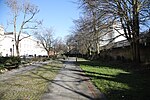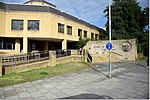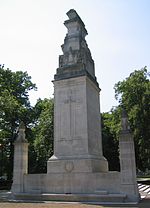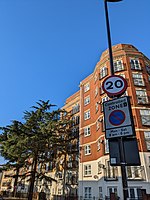St Anne's Catholic School, Southampton
1904 establishments in EnglandAcademies in SouthamptonCatholic secondary schools in the Diocese of PortsmouthEducational institutions established in 1904Girls' schools in Hampshire ... and 3 more
Recipients of Civic Trust AwardsSecondary schools in SouthamptonUse British English from August 2015
St Anne's Catholic School is an 11-18 secondary school in Southampton, England, for girls. The school's sixth form is coeducational. The school is situated close to the city centre, and attracts pupils from all round the city and beyond. The school converted to academy status in August 2012. In January 2016, there were 1080 students enrolled, with 48 students at the end of Year 13. Until 2006, it was known as St Anne's Convent School.
Excerpt from the Wikipedia article St Anne's Catholic School, Southampton (License: CC BY-SA 3.0, Authors).St Anne's Catholic School, Southampton
Carlton Road, Southampton Banister Park
Geographical coordinates (GPS) Address External links Nearby Places Show on map
Geographical coordinates (GPS)
| Latitude | Longitude |
|---|---|
| N 50.914722222222 ° | E -1.4055555555556 ° |
Address
St Anne's Catholic School
Carlton Road
SO15 2WZ Southampton, Banister Park
England, United Kingdom
Open on Google Maps









